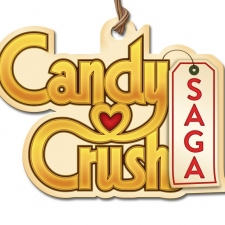Once more we return to the archive of famous mobile titles that made the industry what it is today. This time we're touching on a real cornerstone of mobile gaming. As far as puzzle games on mobile go, few are as successful - or as addictive - as King’s Candy Crush Saga.
The poster-child for mobile success and unprecedented growth it’s undeniable that developer King provided the blueprint for massive money on mobile. They’re also the focus of the ongoing - as of the time of writing - Activision-Blizzard acquisition.
From building a portfolio of hundreds of smaller titles on browsers, to being one of the biggest developers in mobile gaming, this is the story of King.
The developers
Another resident of the Nordic countries, King originated in Stockholm, Sweden. The company was founded by a number of investors rather than game design alumni or existing veterans of the industry. These include Thomas Hartwig, Sebastian Knutsson, Lars Markgren and Patrik Stymne, who had all worked previously with co-founders Riccardo Zacconi and Toby Rowland on a website called Spray, a web portal similar to their new venture.
Initially founded as “Midasplayer.com” and offering browser games, this new site would be rebranded to “King.com” in 2005, when the site first turned a profit. The popularity of social network games in 2009, on sites such as Facebook, encouraged King to begin branching out with titles that they had already developed for the browser market.
In an interview with Venturebeat after the fact, Tommy Palm, one of the four developers behind Candy Crush Saga spoke about the company’s early years. “[The Company] changed a couple of times. But it’s been focused on games. Casual, skill-based games were something King was doing for quite some time and leading in that small segment.”
Development & Release
Candy Crush’s journey to success is a relatively simple one, but requires an understanding of the state of gaming at the time. So let’s flash back to the heady year of 2011, when smartphones still competed with Facebook gaming, and web-browser games were still a significant part of the business.
Initially, King developed its games for web-portal, not unlike fellow web game alumni Miniclip. However, they would develop a title called Miner Speed for a cross-platform audience. In this case the game, a match3 title quite like Candy Crush eventually would be, was available on iOS across iPhone, iPad and iPod Touch. It was the first time that King dabbled with cross-platform development.
But Miner Speed was hardly the finest title, and in an interview with Apple that went into a brief history of King, cofounder Sebastian Knutson was frank about the quality of King’s early output. “I designed over 100 of them myself. Of the 10 worst games we ever did, I did eight of them! Candy Crush was probably the seventh match-3 game I made.”
Candy Crush’s release marked a subtle change on King’s part. Initially released on web browsers, the game proved moderately successful and was selected to be King’s next Facebook port. In this case it owes the “saga” name to the previous King title Bubble Witch Saga. Of the four people attributed to Candy Crush’s development, only the aforementioned Tommy Palm is mentioned often, including in the interview he gave to Venturebeat.
According to the same Apple interview with Knuttson, it was the shift to Facebook that turbocharged the growth of Candy Crush Saga. Mainly due to the addition of level-based mechanics, not just the social aspects common to Facebook games. With these additions it made Candy Crush a game not restricted but enhanced by its social aspects.
Next up was a port to mobile, specifically iOS and Android, platforms that King already had previous experience and advantages with. “I was super-unsure before launching the game on mobile. A few weeks before launch I was like, ‘You have so many games on your phone. If you run out of lives, why wouldn’t you just go to the other games you have? Why would you come back?’”
The shift to mobile, however, would precipitate King’s greatest success.
The success
King’s reaction to the rapid success of Candy Crush once it hit mobile is also a view into the earlier days of mobile gaming - relatively speaking - when titles were considered a lot more disposable, and long-term support was relegated mainly to RTS and strategy titles with naturally long lifespans such as Clash of Clans.
In the Apple interview, Knuttson says how, “Over Christmas it just took off. We weren’t really prepared for it. Our mind-set was that this game is going to be gone in six to nine months, so we needed to have the next game ready. Over time, we realised that’s not the pattern at all. We misjudged the longevity of a game like this.”
Candy Crush Saga’s rise was steady but fast, and by 2013 the title had been downloaded half a billion times, setting a new standard for puzzle and mobile games and earning $633,000 each day for King. One unexpected place where it came to fruition was the city of Hong Kong, where one-in-seven people were reported to be playing the game at the time.
King would go on to be acquired by Activision-Blizzard and forms the third, unspoken part of this triumvirate. Paying a whopping $5.9 billion for the developer, we ranked Activision Blizzard’s acquisition of King as #5 on our list of the top ten video game deals of all time.
King, however, has not been without controversy. Something which has been a major problem for all three parts of the ABK trifecta. In this case it was a bold and some would say farcical attempt to trademark the word “Saga”, a term used in one case by the PC title Banner Saga. Despite the controversy the two companies came to an agreement that had developer Stoic continue to use the name.
As of now, King is arguably the most stable of the ABK triad. With the company still pulling in massive revenue, including around $684 million of Activision Blizzard’s revenue coming from Candy Crush and King’s wider portfolio. And the studio leading the pack in Activision Blizzard’s closely-scrutinised representation report.
Why was it successful?
It goes without saying, as we’ve specified in the other entries of mobile masterworks, that we can observe some common elements between games like Subway Surfers, Clash of Clans and Angry Birds. Simple, accessible gameplay, appealing but non technically-demanding graphics and a means to play socially in some way.
It’s certainly undeniable that Candy Crush and Candy Crush Saga also share these elements. But the genesis of Candy Crush lies in its predecessor, Bejeweled. Candy Crush owes most of its design to Bejeweled, arguably the granddaddy of them all when it comes to match3 games.
Breaking down Candy Crush’s appeal also necessitates breaking down the appeal of the match3 genre - and to an extent its successor the merge genre - which is the simple puzzle nature of these games. By producing a simple, repeatable puzzle game it offers a basic sense of accomplishment and progression, while also allowing players to compete against their friends with social elements.
You could argue that the colourful graphics are also similar to games like Angry Birds, but they are also strikingly different. For one the core gameplay is not tied to these aesthetic elements. As far back as Bejeweled it was merely a simple way to differentiate each of the elements that needed to be matched in a puzzle - it simply added something more pleasant for players to look at.
Key dates
- 2003: King founded
- 2011: Candy Crush released to the web.
- 2012: Candy Crush Saga comes to Facebook, mobile version releases later same year.
- 2014: King’s IPO, Candy Crush Soda Saga released, King's trademark dispute with developer Stoic.
- 2015: Candy Crush Saga comes preinstalled with Windows 10 Home.
- 2016: King acquired by Activision Blizzard
- 2018: Candy Crush Friends released.






















